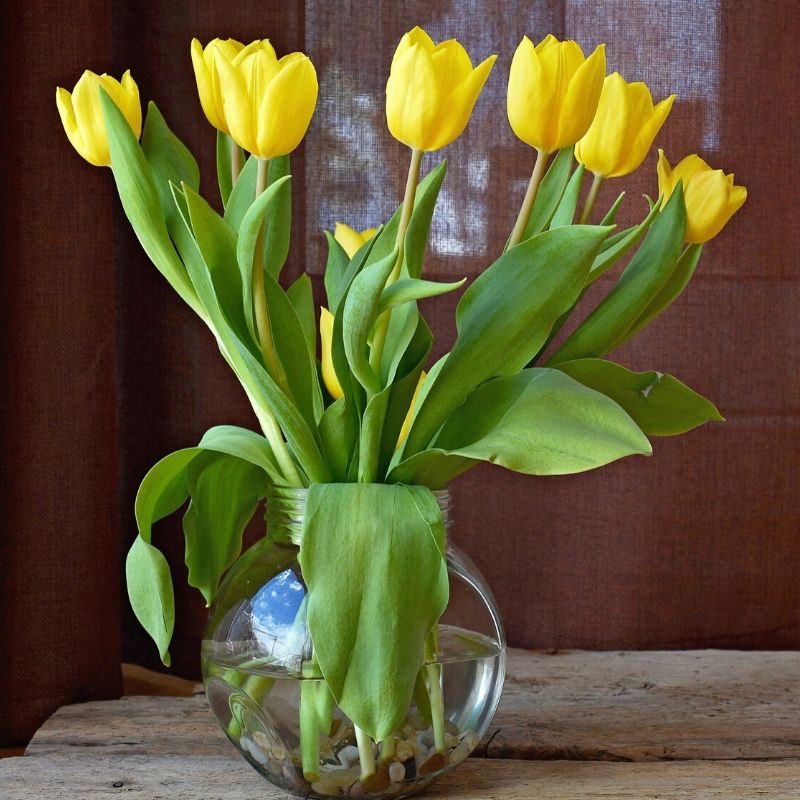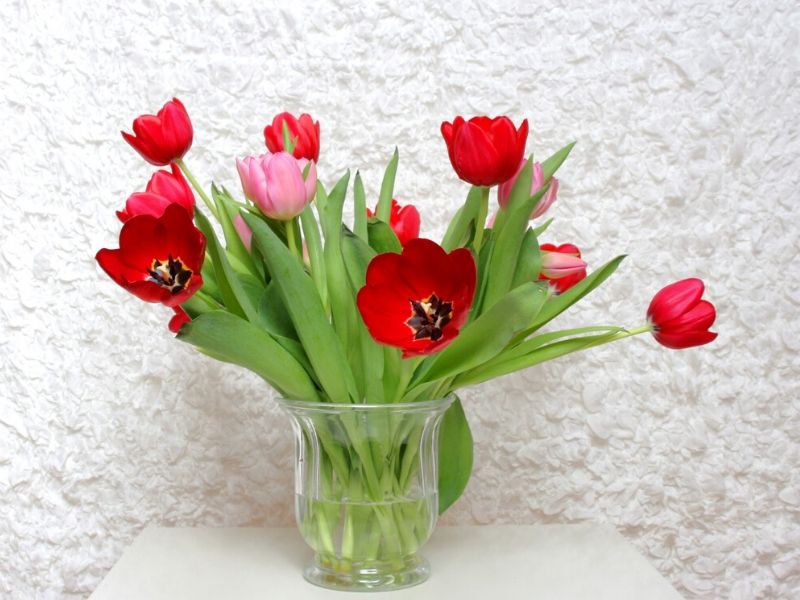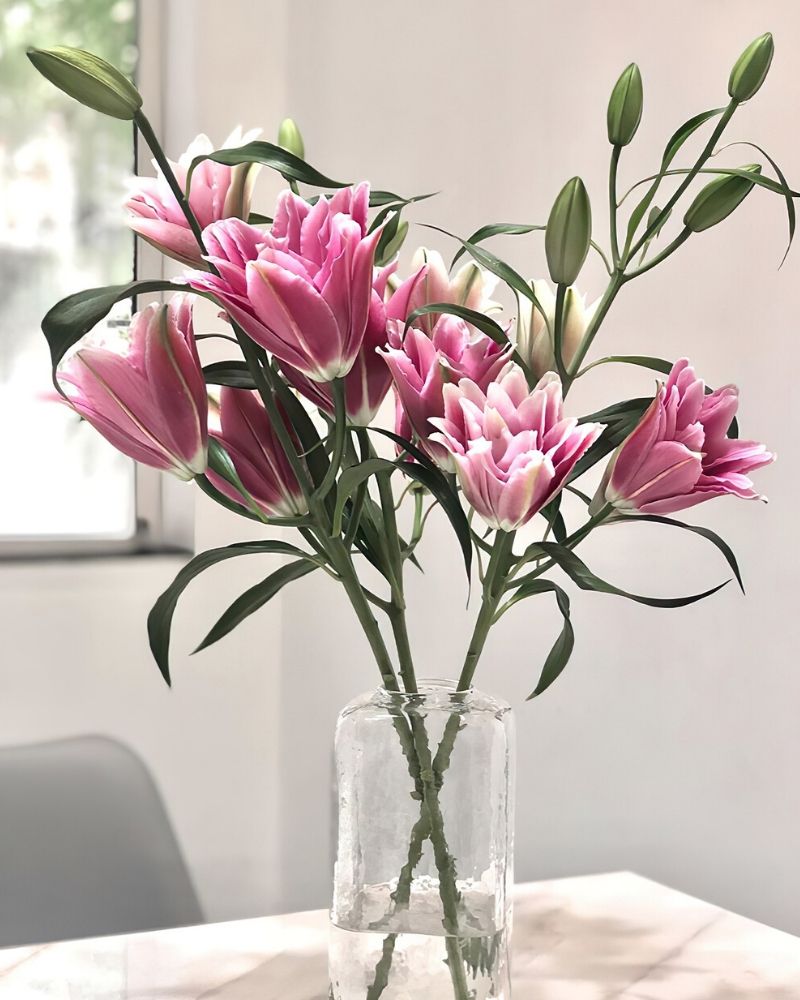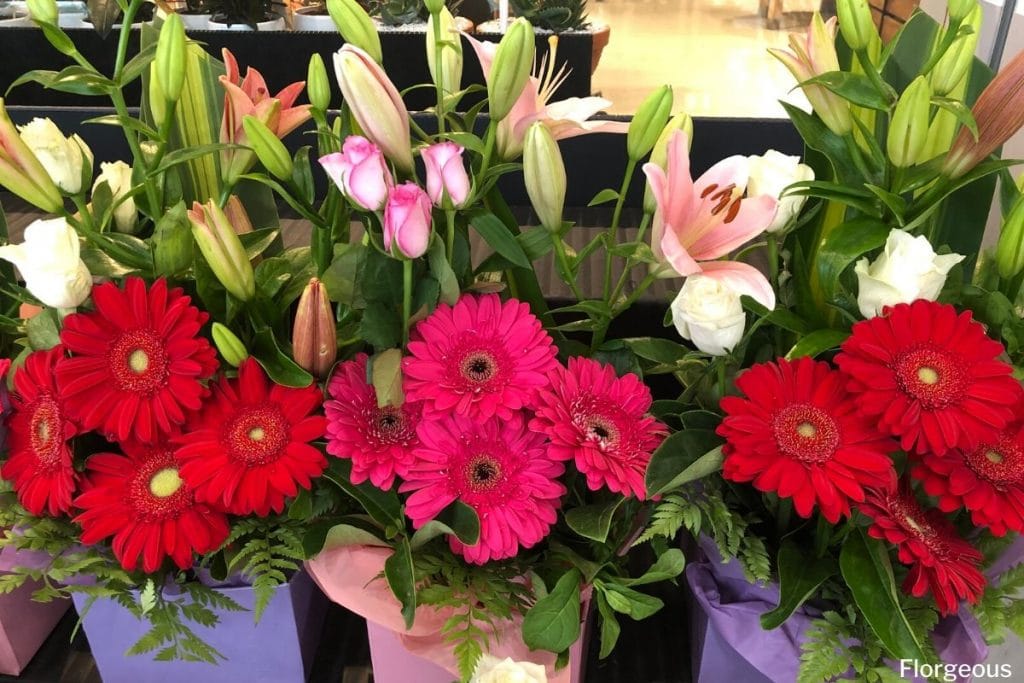Fresh cut flower bouquets and arrangements are wonderful and exciting gifts for all occasions. Whether you delight in the vibrant eye-catching color of the blooms, the mixture and variety of the flowers, or the alluring fragrance, you will surely want to maximize the experience by following one of these ten methods for preserving cut flowers.
These tricks of the trade will help keep your cut flowers healthy, perky and ensure that they bloom and live longer. Each method listed should be repeated at least every third day.
- #1. Cutting Stems at 45-Degree Angle
- #2. Adjusting Water Temperature
- #3. Removing Yellow Leaves and Leaves Below Water Line
- #4. Choosing The Best Location To Place Your Vase
- #5. Providing Nutrients
- #6. Maintaining A Healthy Environment
- #7. Preserving Flowers
- #8. Using Apple Cider Vinegar and Sugar
- #9. Using Aspirin
- #10 Using Alcohol
- FAQs
#1. Cutting Stems at 45-Degree Angle

A very common method used in increasing the lifespan of your fresh flowers is to cut the stem ends at approximately a 45-degree angle.
The diagonal cutting of the stem is important because when placed in the container, the stem won’t rest completely on the bottom. This allows for water to enter the stem more efficiently and reach the top ensuring that all water and nutrients get where they need to go.
It is suggested that you clip off approximately 1 inch to 2 inches off the stem. You will want to repeat this process each time you refresh your vase. It is also suggested that you select a container with a wide opening so that stems are not cramped or crowded. Remember to place the stems in your water mixture as quickly as possible after trimming the ends.
#2. Adjusting Water Temperature

Helping cut flowers thrive and bloom their brightest revolves around water temperature. Across the board, lukewarm water speeds the water moving up the plant’s straw-like stems. The exception to this rule is when working with bulb flowers. These beauties prefer cold water.
This method allows for fewer air bubbles to clog the flower’s plumbing, so water and nutrients transport freely. There is also a trick known as “hardening” cut flowers and involves dipping the freshly cut stems in hot water.
#3. Removing Yellow Leaves and Leaves Below Water Line

A common-sense trick that slows down the growth of bacteria in your vase which promotes healthier flowers and blooms. As you arrange the stems in the clean vase, be sure that you remove any leaves that will rest below the waterline.
As you refresh your vase every few days, be sure to check for any additional leaves that have drooped or died and remove them as well. Remember to rearrange flowers in order for new blooms to have space to open properly.
#4. Choosing The Best Location To Place Your Vase

Ensuring fresh cut flower vitality is by selecting the proper display location for your arrangement. Fresh flowers should be kept away from areas with direct sunlight. Your display location should also be free from drafts and away from heat or air conditioning vents.
Keep in mind that ceiling fans, open windows, and even heat from common household appliances should be avoided. Cut flowers generally do best in cool temperatures. Remember that florists store cut flowers in refrigerators.
One final hint on display locations. Keep fresh fruit away from your flowers. As a fruit ripens, it gives off ethylene gas. This gas can shorten the life of fresh-cut flowers.
#5. Providing Nutrients

This method touches on the basic needs of cut flowers including hydration, nutrients and keeping the growth of microorganisms in the vase to a minimum.
Experts suggest that water should be dumped, vases cleaned, stems reclipped, dead foliage and flowers removed and the arrangement quickly placed back into clean water containing a mix that feeds the plant and slows the growth of bacterial organisms.
Many cut flowers come with a flower food packet. Sprinkle small amounts of the packet into the clean water each time and stir.
The own flower food in these packets contains sugar, bleach and an acidifier. If you do not get a packet with your flowers, you can mix your own using drops of bleach, a bit of sugar and citrus juice with water or citrus soda.
Mixture recipes suggest mixing a quart of warm water with at least 2 tablespoons citrus juice with ½ teaspoon regular bleach and 1 tablespoon sugar. Stir well and place in a vase.
#6. Maintaining A Healthy Environment
This focuses on the basic need of keeping microorganisms at bay by cleaning the vase, removing wilted, browning or decaying flowers or leaves, diagonally clipping stem ends and placing your cut flowers into fresh warm water containing several drops to a maximum of ¼ teaspoon regular bleach for each quart of water used. It is suggested that you wear gloves and stir the water prior to reinserting the cut flowers.
#7. Preserving Flowers
This is for preserving fresh bunches of blossoms including all the clipping and cleaning suggestions listed in the previous methods.
The process looks to clear sodas as the ingredient for preserving vigor and longevity of the flowers. Any clear soda should do the trick! With basic maintenance done, just stir in ¼ cup to a full vase and add flowers.
#8. Using Apple Cider Vinegar and Sugar
This one takes a slightly different twist, using common apple cider vinegar and sugar. Once the flowers have been removed from the vase and clipped for dead matter and stem ends trimmed, warm water is added to the vase with 2 tablespoons of apple cider vinegar and 2 tablespoons of sugar.
Stir well until sugar is dissolved and add flowers. The vinegar and sugar accomplish the tasks of impeding the bacteria growth in the water while the sugar maintains fresh blooms by providing essential nutrients to the cut flowers.
#9. Using Aspirin
Here is a simple yet effective way to add longevity and bloom to your arrangement. Just take an adult aspirin and crush it. Place the aspirin in a quart of warm water and mix until completely dissolved.
Service fresh flowers by removing any wilted, browning or spent flowers or leaves. Clip stem ends diagonally and rearrange flowers in the vase.
#10 Using Alcohol
This allows flowers to absorb nutrients from the water and decrease bacteria in the vase by helping to halt ethylene gas production in the arrangement.
The recipe suggests a few drops of any see-through alcohol such as gin and 1 teaspoon of household sugar mixed in about a quart of warm water. Stir well and place prepared cut flowers in the mixture.
FAQs
What can I add to water to keep flowers fresh?
Adding floral preservatives or commercial flower food to water can help keep flowers fresh. These solutions typically contain ingredients such as sugars to nourish the flowers, acidifiers to lower the pH of the water, and biocides to inhibit bacterial growth.
What is the best liquid to preserve flowers?
The best liquid to preserve flowers is a floral preservative or commercial flower food mixed with water. These solutions provide essential nutrients, adjust the pH of the water, and inhibit the bacterial growth, helping to prolong the life of cut flowers.
Does baking soda make flowers last longer?
No, baking soda alone is not typically used to preserve flowers. While it may have some antibacterial properties, it is not as effective as commercial flower preservatives in providing nutrients and adjusting the pH of the water to prolong the life of cut flowers.
Does vinegar make flowers last longer?
No, vinegar alone may not provide the necessary nutrients to keep flowers fresh for an extended period.
In Summary
Whether you choose to use a commercially prepared flower extender packet or a fresh cut flower extender made from common home ingredients, they really can extend and preserve the beauty and vitality of your fresh cut flower arrangement.
Lovely fresh cut flowers create memories, especially wedding flowers! Using one of these ten methods for preserving your cut flowers will have you enjoying your bouquets and arrangements to the fullest extent possible.
If you want to learn more about other flowers, visit this page.








